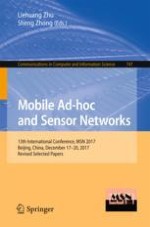This book constitutes the refereed proceedings of the 13th International Conference on Mobile Ad-hoc and Sensor Networks, MSN 2017, held in Beijing, China, in December 2017.
The 39 revised full papers presented were carefully reviewed and selected from 145 submissions. The papers address issues such as multi-hop wireless networks and wireless mesh networks; sensor and actuator networks; vehicle ad hoc networks; mobile social network; delay tolerant networks and opportunistic networking; cyber-physical systems; internet of things; system modeling and performance analysis; routing and network protocols; data transport and management in mobile networks; resource management and wireless QoS provisioning; security and privacy; cross layer design and optimization; novel applications and architectures.
